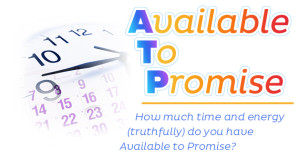Keeping It All Together (Part 1) by Dorit Sasson
So how can you keep it together and still thrive in the classroom? This guide will show you how:
- Don’t fight the system. When it comes to cancelled lessons and other unpredictable and school-related matters, there is really nothing you and I can do about it. Keep your cool and continue as best you can. As the old saying goes, “pick your battles wisely.” Fighting the system will only make your job harder but there are plenty of things you can do that aren’t just about surviving in the classroom.
- Don’t compare yourself to other teachers. So what if other teachers seem to have better control of their classes? It might take you an entire year to develop a classroom management plan that is effective for your class, but again, so what? You are unique.
- Continue teaching core subject skills until the very last school day possible.
The trick is to continue teaching important educational and subject skills (not just those that are test-related) in a fun and motivating way. (see tips #9,#10) - Set your intentions for success especially during the last few months of the school year when time and curriculum constraints and high-stakes testing can wear you down. As Suzanne Lieurance says, “have every thought, statement and action reflect that all day long. Teachers know that they generally get what they expect of their students. What someone says about you can help you create a totally different and new expectation for yourself – so get a friend to write out a positive statement about you. Then notice how you strive to LIVE according to that statement every day.”
- Balance your life. Don’t compromise on fun and meaningful activities that make you feel good about yourself. Start each day in an empowering and confident way. Don’t succumb to the pressures but rather accept them for what they are, realizing that they too, shall pass.
- Hang out with supportive and positive people. In times of difficulty, you’ll need a supportive network of teachers and other professionals with whom you can reach out, vent and share your successes.Professional isolation, especially towards the end of the school year, is an enemy. Plus, you’ll probably get some nifty ideas for your own teaching.
- Start your day in a positive and affirming way. Remember the law of attraction – positive attracts positive. Don’t say: “I wish my classes were easier to teach at this time of year” or, “I wish I didn’t have to go through this…” because you’re still focusing on those negative elements and affirming to yourself that they are there. Instead, focus on the positive in your teaching: the ability to inspire and motivate students and teachers. Write down these affirmations in a place where you can see them every morning as you begin your day. They might even empower you.
- If you can’t beat ’em, join ’em! Participating in school and field trips is a great way to experience school culture in a refreshing way. Students will appreciate it, too and may perhaps view you in a different light.
- Adapt classroom management skills and instruction to suit new classroom situations. This requires a great deal of flexibility and teacher intuition to know what skills you need to be using at a given moment. For example, if you find yourself teaching a small class for one lesson, provide interesting and well-paced lessons to suit small groups of students.
- Have Lots of S.O.S. Kits! Some classes may need a Plan B and even Plan C. There’s nothing wrong with overplanning.
Students will always continue to try and push the limits. That is just their nature. So make sure you understand your own rationale for what you are doing in the classroom. You can teach with confidence and successfully when the going gets tough.
So work it! Remember – “Make Your Teaching Sparkle. Teach for Success. Make a difference in the classroom!”
Next week, look for part 2 of the “How to Survive and Thrive Guide” to help you become more productive in the classroom!
© Dorit Sasson | These classroom tested tips were brought to you by Dorit Sasson, creator and director of Giving Your Voice a Story.
Dorit Sasson is a freelance writer and educator.
 If you’ve ever felt you could use an extra two hours a day, or that you could finally get caught up if you had another day each week… You’re in dire need of ATP: Available to Promise – How much time & energy (truthfully) do you have Available to Promise?. You’ll learn how to apply the Available to Promise (ATP) concept to your overall life scheme to reclaim the time you so desperately need, and is available to download instantly.
If you’ve ever felt you could use an extra two hours a day, or that you could finally get caught up if you had another day each week… You’re in dire need of ATP: Available to Promise – How much time & energy (truthfully) do you have Available to Promise?. You’ll learn how to apply the Available to Promise (ATP) concept to your overall life scheme to reclaim the time you so desperately need, and is available to download instantly.



